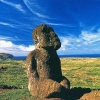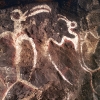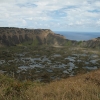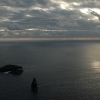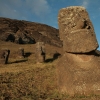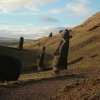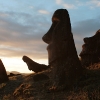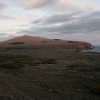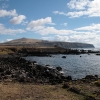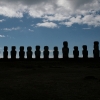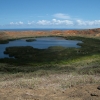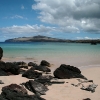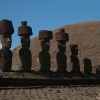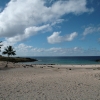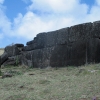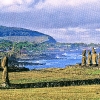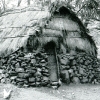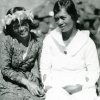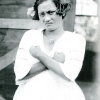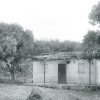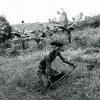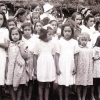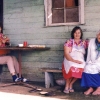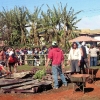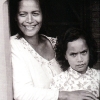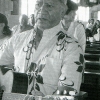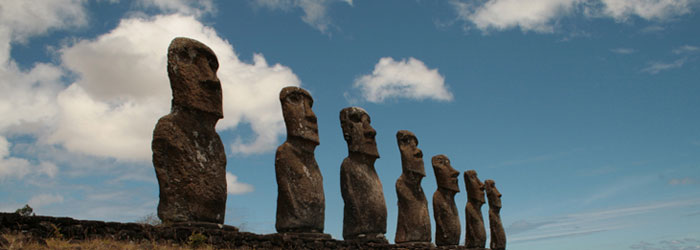Art
The Rapa Nui people developed an advanced and sophisticated megalithic art tradition that emerged from their intense devotion to ancestor worship and is unparalleled in Polynesia. Over a period of five hundred years, they erected close to three hundred altars, called ahus, and carved more than six hundred stone moaistatues. These monumental pieces expressed the competition for power among different lineages on the island and a clear desire for ostentation through the construction of ever-larger and more elaborate works.
The ahuswere the product of an architectural tradition that emerged gradually, free from external influences. The oldest of these platforms feature large walls composed of enormous blocks of lava fitted together with incredible precision. The first moais also date to this period. Later, more moais were erected and the altars grew in size, with new features added such as broad side ramps and paved areas in front made of basalt blocks. Among these structures, the ahu of Tongarikiwas the greatest project undertaken during the island’s classical period and consists of 15 imposing moaiswith their respective red scoria headpieces (pukao). During historic times, the ahus and moaisof Rapa Nui were gradually destroyed and replaced by pyramid-like structures used for cremations and burials.
Unlike in Polynesia, where images of the ancestors were carved from thick trunks, on Rapa Nui the moaiswere carved from enormous blocks of volcanic rock. Hard basalt stone was used for this purpose, as well as trachyte and red scoria and, later on, rock from the RanoRaraku crater. The sculptures average four meters in height, except for the Paromoai that stands on the Te Pito Kura ahu, which measures 10 meters tall and weighs 85 tons. This statue epitomizes the use of megalithic expressions during this period in the service of political and religious power. As the classic period waned and the ancestral culture of Rapa Nui began to decline, more than seventy moais were left unfinished in the island’s quarries.
As for their manufacture, the moais of Rapa Nui were carved at the quarries themselves, down to details such as eyes, nose, ears and even the “tattoos” on their backs. From the quarries they were placed in a wooden frame and transported to the respective altar by ropes. The moaiswere then erected on the altar platforms with their backs to the sea. At this time the ariki(headman of the clan)—dressed in a long, painted barkcloth cape and wearing a headdress of white feathers and wooden pectoral ornaments (reimiro) and pendants (tahonga)—presided over a ceremony intended to invest the moai with the power to protect the lineage and the territory. The statue’s white coral and black obsidian eyes were set in place at this time, along with its enormous red scoria headpiece resembling the ariki’s turban or topknot, which was a sign of divine origin.



